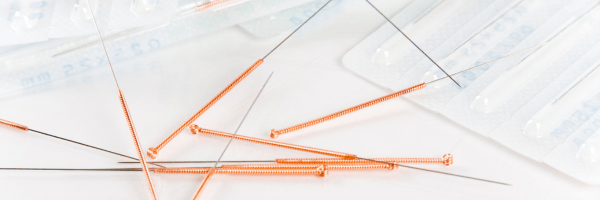Acupunture for Osteoarthritis
Acupuncture, a staple of traditional Chinese medicine, is gaining acceptance in the Western world as an effective alternative or complementary treatment for managing osteoarthritis. This ancient practice involves the insertion of very fine needles into specific points on the body, believed to rebalance the flow of energy or Qi. Modern research suggests that acupuncture may help reduce pain and improve mobility by stimulating nerves, increasing blood circulation, and enhancing the release of endorphins and other natural painkillers. For those with osteoarthritis, acupuncture offers a promising option to reduce pain and improve joint function.
Understanding Acupuncture
Acupuncture is a therapeutic practice rooted in traditional Chinese medicine, dating back over 2,000 years. It is based on the principle that the body contains patterns of energy flow referred to as Qi (pronounced "chee"). According to traditional Chinese philosophy, optimal health is achieved by maintaining balanced Qi throughout the body, with illness or pain resulting from blockages or imbalances in this energy flow.
Acupuncture seeks to restore the balance of Qi by inserting fine, sterile needles at specific points along the body's meridians. Meridians are channels through which Qi flows, connecting the surface of the body with internal organs and systems. The placement of acupuncture needles at these strategic points is believed to release blockages, allowing Qi to flow freely and restoring health.
From a scientific perspective, acupuncture is thought to work by stimulating the nervous system, thereby activating mechanisms that alleviate pain, boost circulation, and calm inflammation. When acupuncture needles penetrate the skin, they may also trigger the body to release endorphins and other natural pain-relieving chemicals. Research suggests that acupuncture can affect areas of the brain involved in pain perception, potentially reducing sensitivity to pain and enhancing recovery from various conditions, including osteoarthritis.
This blend of ancient wisdom and modern science makes acupuncture a unique and increasingly accepted method for managing pain and improving physical function, particularly in the context of chronic conditions like osteoarthritis.

Acupuncture and Osteoarthritis
Acupuncture offers several specific benefits for individuals suffering from osteoarthritis. By targeting strategic points along the body, acupuncture can help alleviate OA symptoms.
Benefits of Acupuncture for Osteoarthritis:
Pain Relief: Acupuncture is known for its ability to reduce pain.
Reduced Stiffness: Regular acupuncture sessions can help ease the stiffness associated with osteoarthritis.
Enhanced Joint Mobility: By improving circulation and reducing inflammation, acupuncture can enhance joint mobility, allowing for greater range of motion and flexibility.
Scientific Evidence Supporting Acupuncture: The effectiveness of acupuncture in treating osteoarthritis symptoms has been the subject of many scientific studies and clinical trials. The evidence, however, has been mixed. Some studies have shown that acupuncture provides significant pain relief and functional improvements compared to standard treatments or sham acupuncture (where needles are placed at non-acupoint locations). For instance, a systematic review and meta-analysis have indicated that acupuncture may help relieve pain and improve physical function in people with osteoarthritis of the knee.
Other studies have suggested that the benefits of acupuncture may be due in part to placebo effects, highlighting the challenges in measuring the true impact of acupuncture. Despite these mixed results, many people report subjective improvements in symptoms and well-being, which supports the inclusion of acupuncture within a comprehensive osteoarthritis management plan.
Given this context, acupuncture is increasingly considered a viable complementary therapy for osteoarthritis, particularly appealing to those looking for non-pharmacological treatment options.

What to Expect During an Acupuncture Session
If you are considering acupuncture for osteoarthritis, knowing what to expect during your sessions can help prepare you for the experience and calm any concerns. Here’s what typically happens during an acupuncture session:
Initial Assessment:Before any actual treatment begins, your acupuncturist will conduct a thorough assessment. This usually involves a detailed discussion about your medical history, current symptoms, and overall health goals. The practitioner may also ask about your lifestyle, diet, and emotional well-being to gain a comprehensive understanding of your health. This initial evaluation helps tailor the acupuncture treatment to your specific needs.
Needle Insertion: Once the assessment is complete, the actual treatment starts. You will be asked to lie down on a treatment table, and the acupuncturist will insert thin, sterile needles into specific acupuncture points on your body. The number of needles used can vary, typically ranging from five to twenty, depending on your condition and the treatment strategy.
The insertion of acupuncture needles is usually not painful, as the needles are very fine and are inserted gently. Most people report feeling only a minor discomfort or nothing at all during the insertion.
Sensations During Treatment: Once the needles are in place, they may be left in position for between 20 to 30 minutes. During this time, it’s common to experience sensations at the needle sites. These sensations can vary from a dull ache to a slight tingling or even a sense of heaviness around the needles. Some people report feeling a movement of energy along the pathways or a profound sense of relaxation. These sensations are generally considered a sign that the treatment is working effectively.
Duration and Frequency of Sessions: The duration of an acupuncture session can typically last from 45 to 60 minutes. The frequency of sessions varies depending on the individual's response to treatment and the severity of their symptoms. Initially, more frequent sessions (possibly once or twice a week) may be recommended to obtain the maximum benefit. As symptoms improve, the frequency of sessions may decrease.
Acupuncture is a cumulative process, meaning benefits often increase with multiple treatments. It’s important to discuss the expected course of treatment with your acupuncturist, including how many sessions you might need before you can expect to see improvement.

Safety and Other Considerations
Acupuncture is widely regarded as a safe treatment when performed by a trained and experienced practitioner. However, as with any treatment, it's important to be aware of potential risks and how to lessen them.
Safety of Acupuncture:Acupuncture involves inserting thin, sterile needles into the skin, which is generally considered safe and causes minimal discomfort for most people. Common side effects are typically mild and transient, including minor bruising, bleeding at the puncture sites, or dizziness. More serious complications, such as infections or needle breakage, are extremely rare but can occur, primarily if the acupuncture is not performed correctly.
Potential Risks: While serious side effects are rare, potential risks include:
Infection: This can be avoided by using pre-sterilized, disposable needles that are discarded after one use.
Improper Needle Placement: This can cause pain or minor internal injury. A well-trained acupuncturist will know the correct needle placement and depth.
Pregnancy Concerns: Certain acupuncture points should be avoided during pregnancy as they may stimulate labor. Inform your acupuncturist if you are pregnant or suspect you might be.
Minimizing Risks: To lessen risks associated with acupuncture:
Choose a Qualified Practitioner: Ensure that your acupuncturist is licensed and certified by relevant national acupuncture or healthcare boards. Many countries and regions have regulatory bodies that maintain standards of practice and require practitioners to undergo substantial training. A qualified practitioner will have a thorough understanding of human anatomy and acupuncture principles, enabling them to provide effective
Communicate Openly: Before beginning treatment, discuss your medical history, current health conditions, and any concerns you may have with your acupuncturist. Open communication will help tailor the treatment to your specific needs while enhancing safety.
Follow Aftercare Instructions: Following any aftercare instructions provided by your acupuncturist can help minimize side effects and maximize the benefits of treatment.
Understanding these safety considerations and choosing the right practitioner allows you to safely incorporate acupuncture into your treatment plan for osteoarthritis.

Integrating Acupuncture with Other Osteoarthritis Treatments
Acupuncture can be a valuable component of a comprehensive osteoarthritis management plan. When integrated thoughtfully, it complements other medical treatments and lifestyle adjustments to provide a holistic approach to managing the condition.
Coordinating Acupuncture with Other Treatments:Acupuncture often works best as part of a holistic approach combined with conventional medical treatments and other therapies. Here’s how you can effectively integrate it into your existing osteoarthritis management plan:
Consult with Healthcare Providers: Before starting acupuncture, discuss it with your healthcare providers including your physical therapist, if seeing one. They can help coordinate acupuncture with your current treatments, ensuring it complements medications, physical therapy, or other interventions without interference.
Schedule Around Other Therapies: Plan acupuncture sessions in a way that they enhance, rather than overlap negatively with, other treatments. For example, scheduling acupuncture after a physical therapy session might help reduce muscle soreness and enhance joint mobility.
Monitor Progress: Keep track of your symptoms and any changes you notice from acupuncture and other treatments. Sharing this information with all healthcare providers involved can help adjust treatments as necessary to optimize your overall care.

Conclusion
Acupuncture has demonstrated significant potential as a complementary approach to managing osteoarthritis. It has been shown to possibly help alleviate pain, reduce stiffness, and enhance joint mobility. Beyond physical symptoms, acupuncture also contributes to overall well-being by promoting relaxation and reducing stress, making it a holistic addition to osteoarthritis treatment plans.
Ready to take control of your osteoarthritis? Click the link below to learn more about our comprehensive Live Well with Osteoarthritis program, designed to help you manage symptoms, improve mobility, and enhance overall well-being.
©️2025 Genuine Glow Welness. All Rights Reserved.



